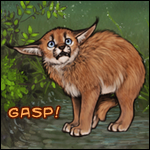|
1 |
|
|---|---|
| Posted by | Art Tips from an Amateur |
 _ (#125883) Resurgent View Forum Posts  Posted on 2019-01-27 21:46:06 |
Do not post (yet) I'm not half bad, you know? I'm no total newbie. I've drawn traditionally forever, and I picked up digital drawing a couple years ago (though I only have a mouse, not a tablet). Just to show my credibility: - Traditional examples - Digital examples Now, onto my tips. The Obvious - Use refs. It's not shameful to not be able to get something right out of your mind's eye. Most people who can draw can't even do that. - Don't claim other peoples' shit as your own. Not only is it an asshole move, but it'll also launch a cascade of problems that will only increase as each one happens, like a domino effect. - Tracing isn't wrong. Bearing in mind the above bullet point, tracing is actually not a bad way to help yourself get a sense of how to shape and position things. You want to keep traced pieces to yourself, and you want to wean off of tracing as you go along with your art and progress. This will make sure that you develop your own style, not somebody else's. If you do share a traced piece -- if, for example, it's the only reference for an OC that you have -- be sure to ask the OG artist for permission; if given, credit the lines to them. Coloring - When using gray, black, or white, tint them. This means that you shouldn't use PURE gray, black, or white. You should have a veeeeeery light tint of blue, green, yellow, red, orange, purple, etc in there! It can make the difference between an 'eh' palette and a '  ' palette. This is a rough coloring I did over this drawing, but take a look at my colors for this guy. He's not just plain B&W; he has a slight purple tint! Playing around in hex code sites can distinctly visualize the tints like that for you. ' palette. This is a rough coloring I did over this drawing, but take a look at my colors for this guy. He's not just plain B&W; he has a slight purple tint! Playing around in hex code sites can distinctly visualize the tints like that for you. - Don't go overboard on the colors. You've gotta pay attention to a couple of things when you're creating a palette and design for a character: blend, realism, weight (distribution or spread). All of these, sans weight, are flexible, depending on the context if the design. For example -- in regards to realism -- if you're designing a human character with special powers, it wouldn't be considered 'realistic' for them to have weird green markings on their skin; however, it would be acceptable because special powers are also not 'realistic'. If you've never heard the terms "Mary Sue" or "Gary Sue," you should look them up on Google Images to get a sense of how not to color a character. Flashy, neon, clashing colors do not usually work. They can, when wielded the right way; there's a fine line between well-done and overcooked that it takes some time to develop a sense of.  0 players like this post! Like? 0 players like this post! Like? Edited on 27/01/19 @ 22:11:45 by Elliott (#125883) |
|
Dalton 🖤 9x Feline Fiery 🔥 (#149557) View Forum Posts  Posted on 2019-01-28 21:55:16 |
Practice. Watch speed paints. Take classes. Practice. Get the right tools. Invest in decent paper, decent pencil, decent pens. If you're training to be a concert pianist, you practice on a grand piano not a foot long eclectric keyboard. For digital medium, this means get decent programs and brushes. Practice. Be very open and hugrily seek criticism. Someone tells you your anatomy sucks, know you need to practice more. You're not going to good for a while. It takes hard work. And the people who will scathingly review your work are your best way to grow. Enjoy the process of drawing, not the result. If you're just trying to draw to get commissions you will hate. Did I mention practice? 10 hours of watching videos, asking people for art tips, looking at art on Instagram is worth less than 1 hour of actually practicing as far as growth. Just do it.  0 players like this post! Like? 0 players like this post! Like? |
1 |
|---|
Memory Used: 625.17 KB - Queries: 0 - Query Time: 0.00000 - Total Time: 0.00324s
 Report
Report
